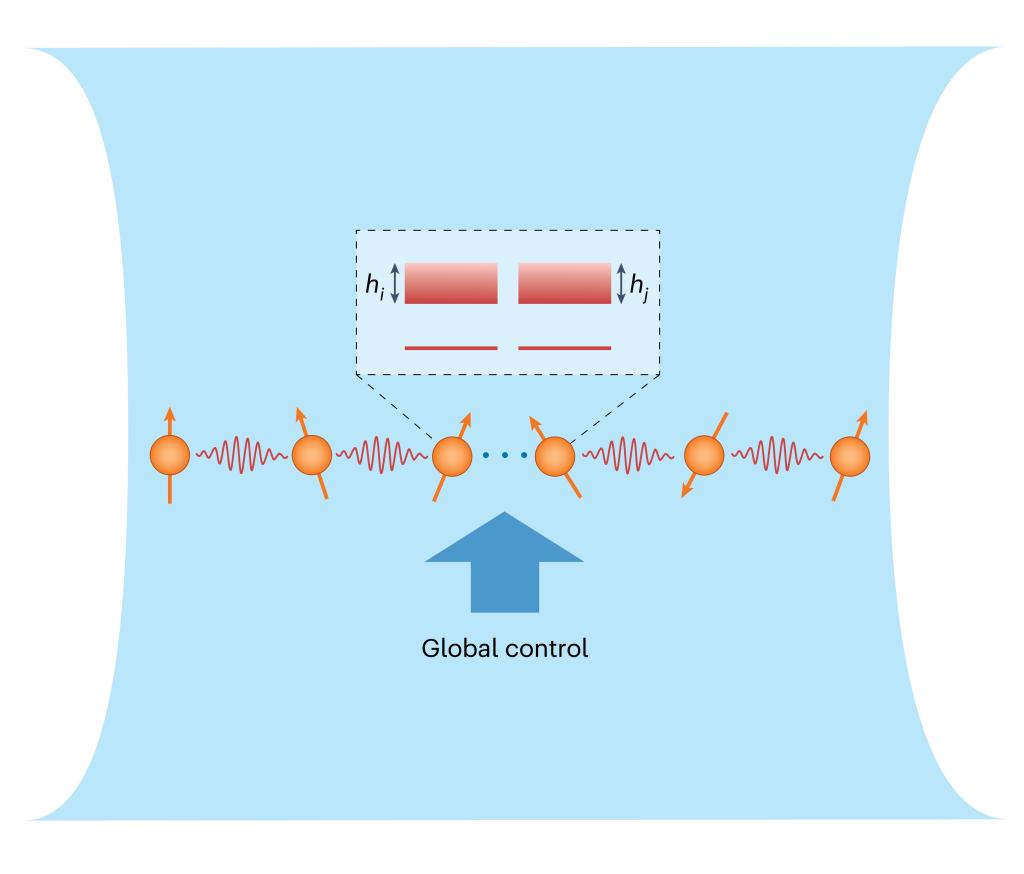
Yaoming Chu and Jianming Cai
A quantum engineering technique powered by disorder ofers access to local correlation functions down to single-site resolution in nuclear spin ensembles, allowing the study of both spin and energy hydrodynamics.

Yaoming Chu, Xiangbei Li and Jianming Cai
Surpassing the standard quantum limit and even reaching the Heisenberg limit using quantum entanglement, represents the Holy Grail of quantum metrology. However, quantum entanglement is a valuable resource that does not come without a price. The exceptional overhead for the preparation of large-scale entangled states raises disconcerting concerns about whether the Heisenberg limit is fundamentally achievable. Here we find a universal speed limit set by the Lieb-Robinson light cone for the quantum Fisher information growth to characterize the metrological potential of quantum resource states during their preparation. Our main result establishes a strong precision limit of quantum metrology accounting for the complexity of many-body quantum resource state preparation and reveals a fundamental constraint for reaching the Heisenberg limit. Our result makes it possible to identify the essential features of quantum many-body systems that are crucial for achieving the quantum advantage of quantum metrology and brings a new perspective to understanding many-body quantum dynamics from quantum metrology.
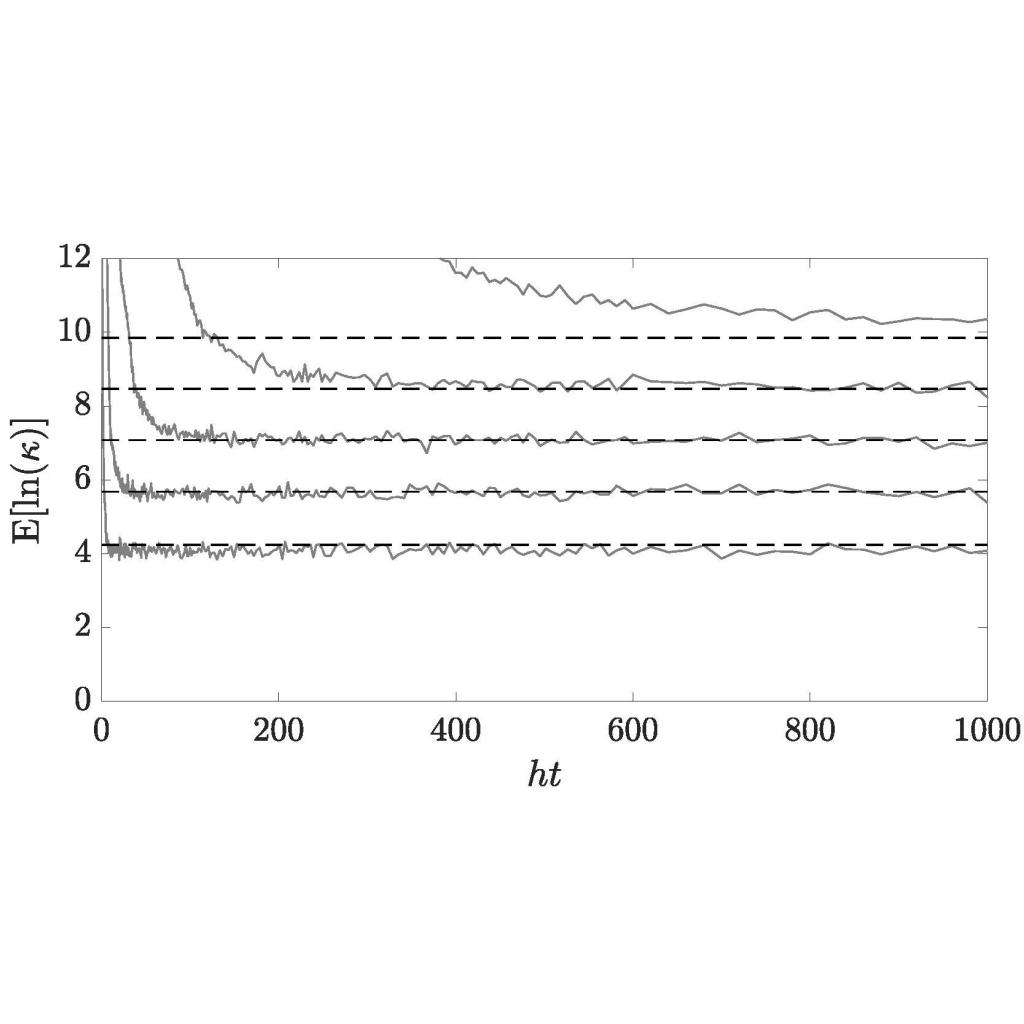
Jingcheng Wang, Shaoliang Zhang, Jianming Cai, Zhenyu Liao, Christian Arenz and Ralf Betzholz
In a recently demonstrated quantum-state tomography scheme [P. Yang, M. Yu, R. Betzholz, C. Arenz, and J. Cai, Phys. Rev. Lett. 124, 010405 (2020)], a random-control field is locally applied to a multipartite system to reconstruct the full quantum state of the system through single-observable measurements. Here, we analyze the robustness of such a tomography scheme against measurement errors. We characterize the sensitivity to measurement errors using the condition number of a linear system that fully describes the tomography process. Using results from random matrix theory we derive the scaling law of the logarithm of this condition number with respect to the system size when Haar-random evolutions are considered. While this expression is independent of how Haar randomness is created, we also perform numerical simulations to investigate the temporal behavior of the robustness for two specific quantum systems that are driven by a single random-control field. Interestingly, we find that before the mean value of the logarithm of the condition number as a function of the driving time asymptotically approaches the value predicted for a Haar-random evolution it reaches a plateau whose length increases with the system size.
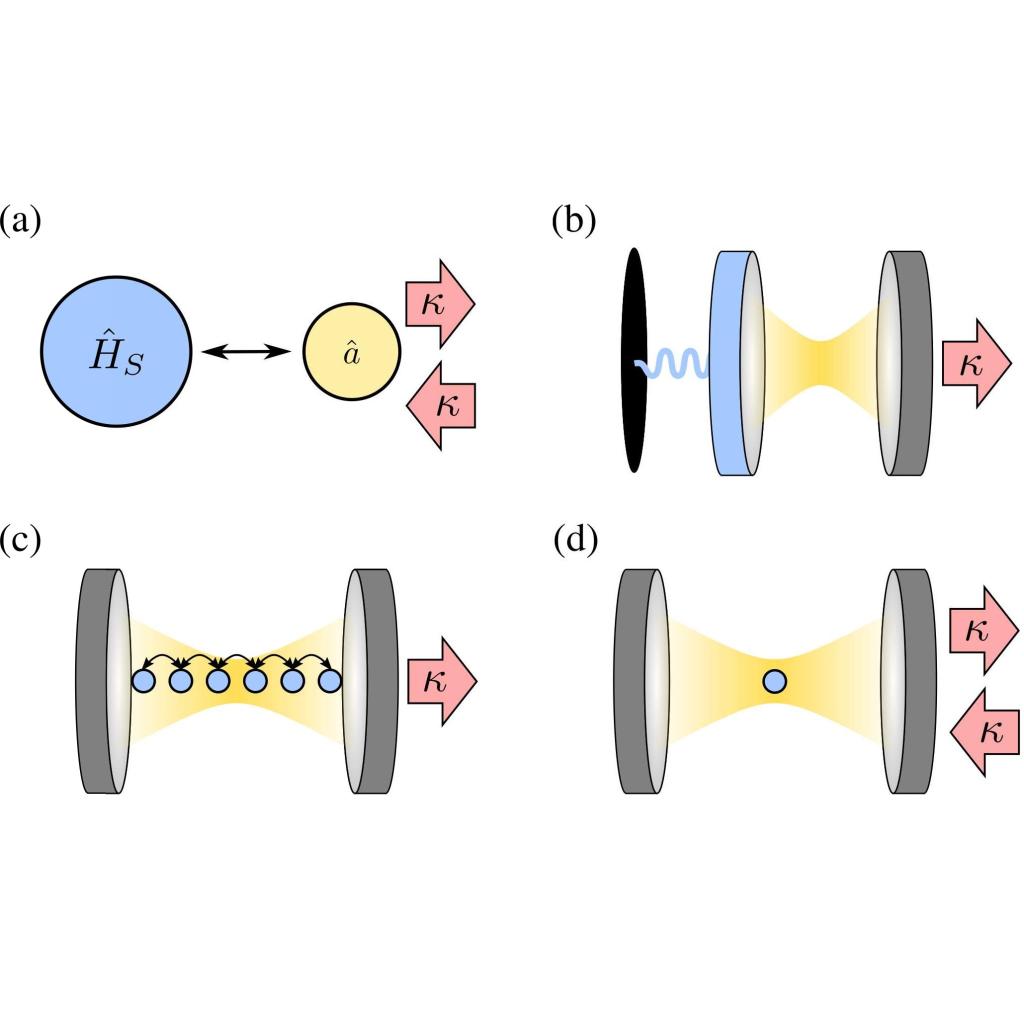
Simon B. Jäger and Ralf Betzholz
Recently, an effective Lindblad master equation for quantum systems whose dynamics are coupled to dissipative bosonic modes was introduced [Jäger et al., Phys. Rev. Lett. 129, 063601 (2022)]. In this approach, the bosonic modes are adiabatically eliminated, and one can effectively describe the dynamics of the quantum systems. Here, we demonstrate that this effective master equation can also be used to describe cooling in systems with light-matter interactions. We provide two examples: sideband cooling of an optomechanical oscillator in the unresolved as well as resolved sideband regime and cooling of an interacting quantum system, the transverse-field Ising model. We compare our effective description with a full numerical simulation of the composite formed by the quantum system plus bosonic mode and find excellent agreement. In addition, we present how the effective master equation can be extended to the case of nonvanishing mean thermal occupations of the bosonic mode. We use this approach to calculate modifications of the linewidth and frequency for a two-level system coupled to a dissipative thermal bosonic mode. Here, we highlight that our approach allows for a massive reduction of the underlying Liouville-space dimension.
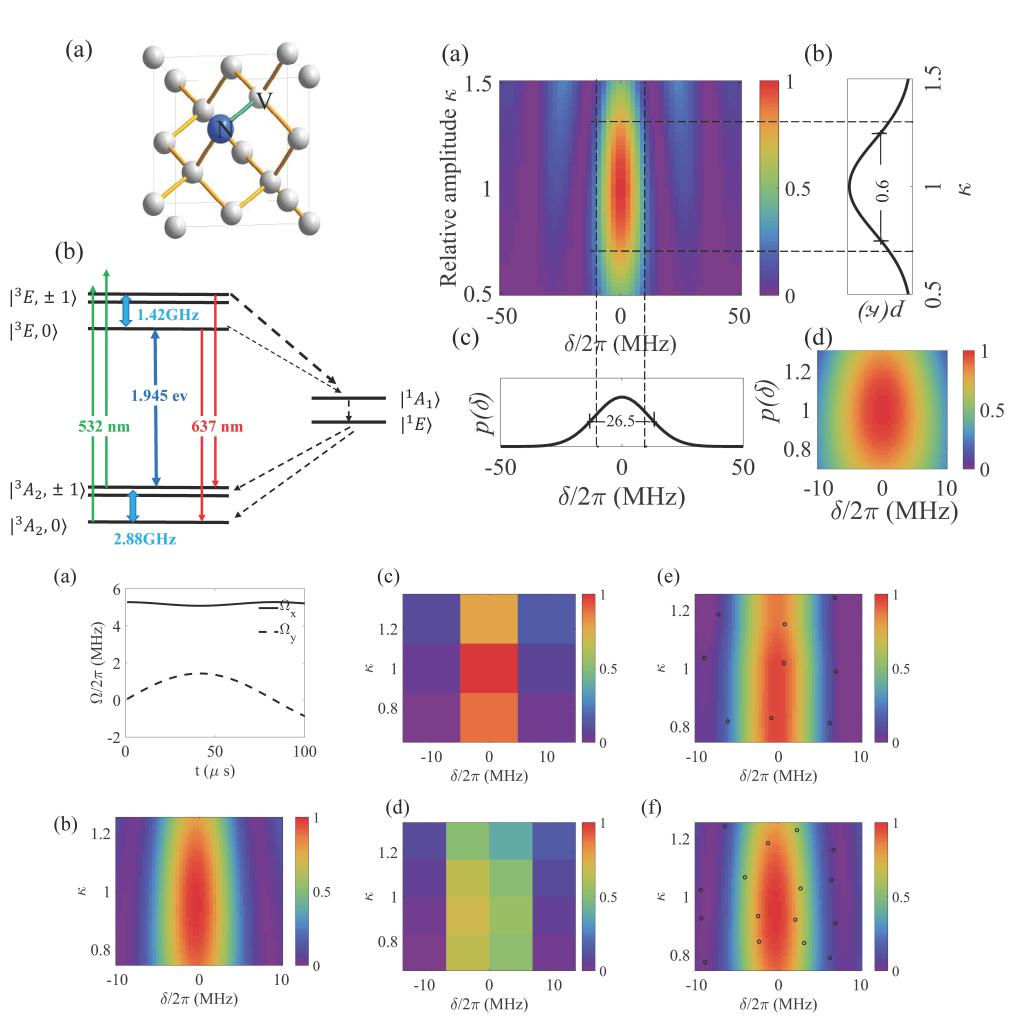
Jiazhao Tian, Ressa S. Said, Fedor Jelezko, Jianming Cai and Liantuan Xiao
NV centers are among the most promising platforms in the field of quantum sensing. Magnetometry based on NV centers, especially, has achieved concrete development in areas of biomedicine and medical diagnostics. Improving the sensitivity of NV center sensors under wide inhomogeneous broadening and fieldamplitude drift is a crucial issue of continuous concern that relies on the coherent control of NV centers with high average fidelity. Quantum optimal control (QOC) methods provide access to this target; nevertheless, the high time consumption of current methods due to the large number of needful sample points as well as the complexity of the parameter space has hindered their usability. In this paper, we propose the Bayesian estimation phase-modulated (B-PM) method to tackle this problem. In the case of the state transforming of an NV center ensemble, the B-PM method reduced the time consumption by more than 90% compared with the conventional standard Fourier basis (SFB) method while increasing the average fidelity from 0.894 to 0.905. In the AC magnetometry scenario, the optimized control pulse obtained with the B-PM method achieved an eight-fold extension of coherence time T2 compared with the rectangular π pulse. Similar application can be made in other sensing situations. As a general algorithm, the B-PM method can be further extended to the open- and closed-loop optimization of complex systems based on a variety of quantum platforms.
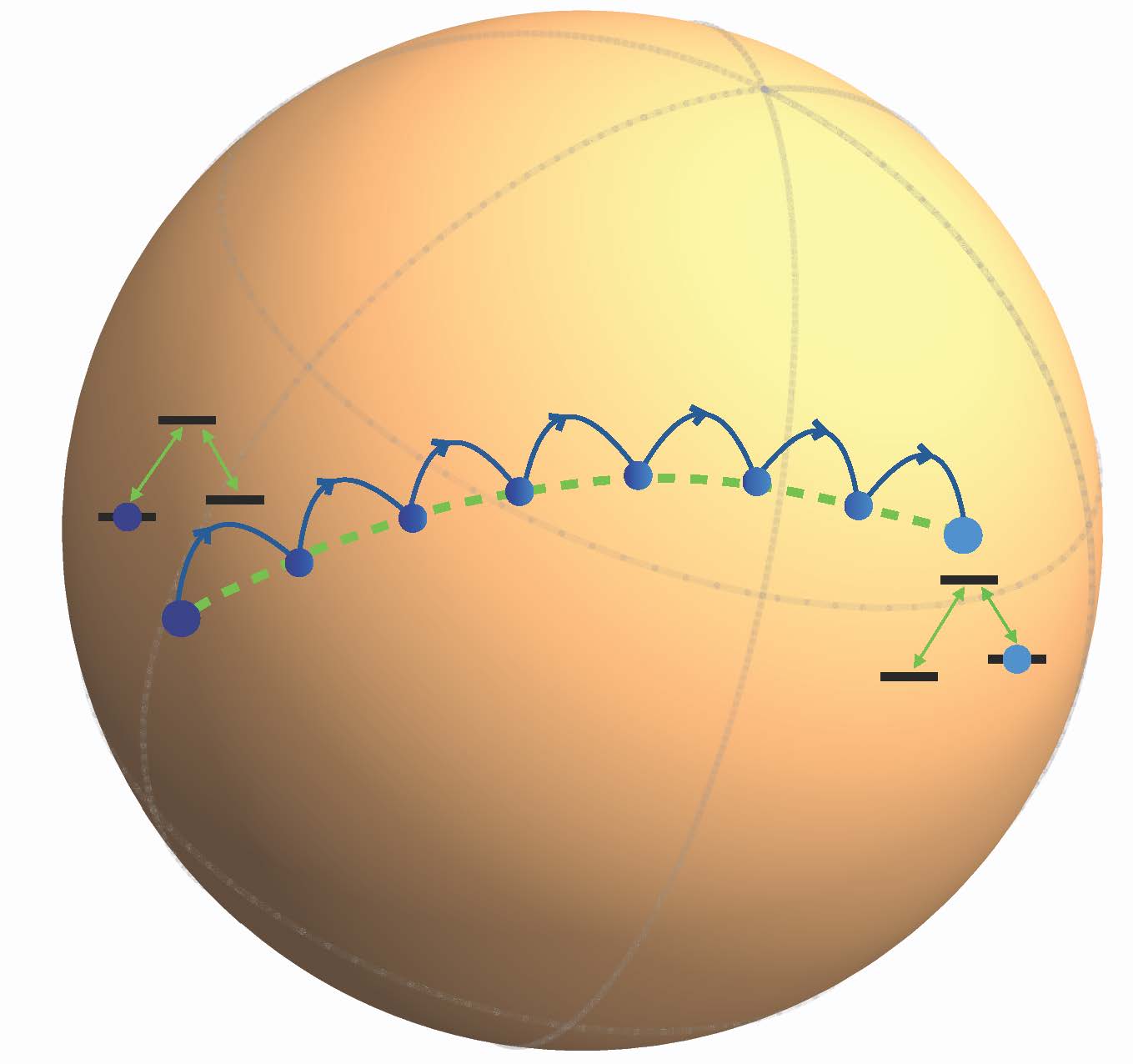
Musang Gong, Min Yu, Ralf Betzholz, Yaoming Chu, Pengcheng Yang, Zhenyu Wang and Jianming Cai
In a solid-state spin system, we experimentally demonstrate a protocol for quantum-state population transfer with an improved efficiency compared to traditional stimulated Raman adiabatic passage (STIRAP). Using the ground state triplet of the nitrogen-vacancy center in diamond, we show that the required evolution time for highfidelity state transfer can be reduced by almost one order of magnitude. Furthermore, we establish an improved robustness against frequency detuning caused by magnetic noise as compared to STIRAP. These results provide a powerful tool for coherent spin manipulation in the context of quantum sensing and quantum computation.
| |
版权所有 Copyright(C) 2018 华中科技大学量子传感与量子测量国际联合实验室